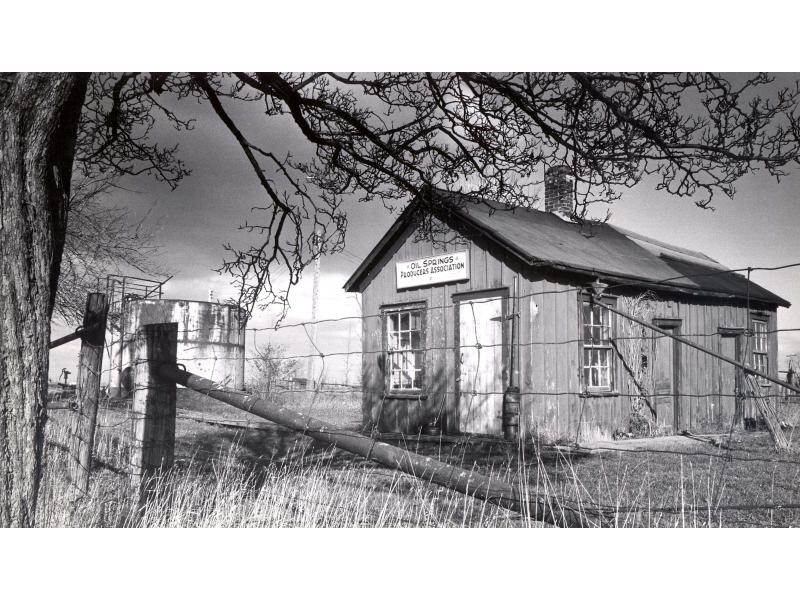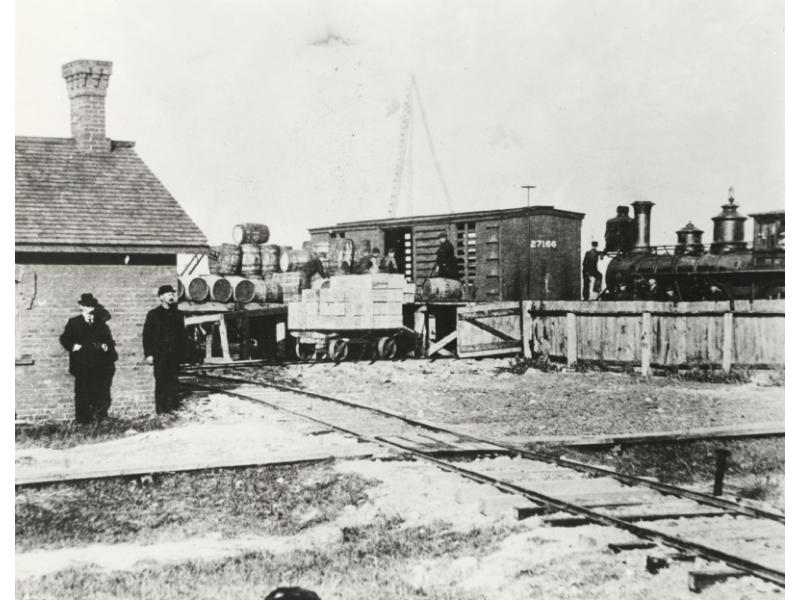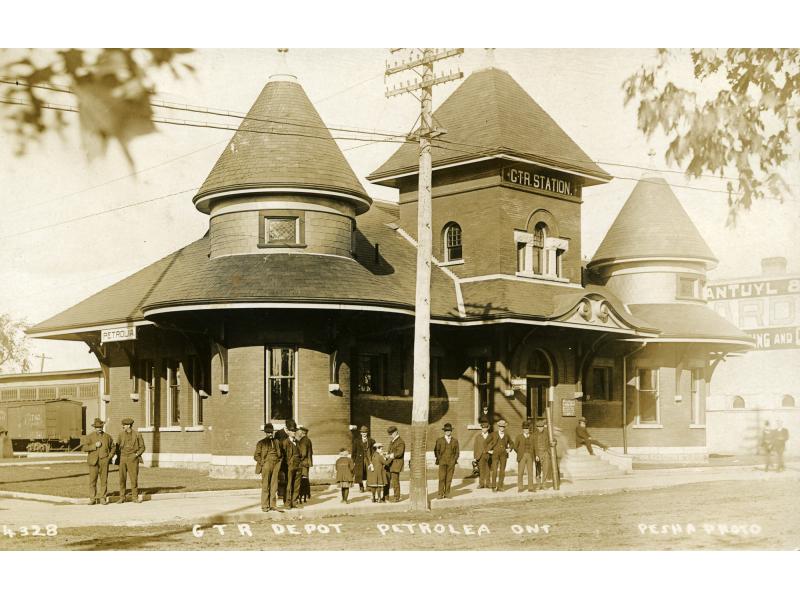From 1858 onwards, the oil producers of Oil Springs transported their crude to the Great Western railhead in Wyoming. It was then shipped and refined in London and Hamilton.
By 1885, rail finally arrived in Oil Springs. This was a spur line that ran five km. north to Oil City where it connected with Canada Southern Railway (west to Courtright on the St. Clair River, and east to St. Thomas). Another spur line was built just west of Oil City that connected Oil Springs to Petrolia and The Great Western Rail running through Wyoming.
To make rail transport easier, the Oil Springs’ producers pooled their crude to an above ground tank. This was an Imperial Oil Receiving Station at the intersection of Gum Bed Line and Kelly Road, on a piece of land leased from Fairbank Oil. In the office of the receiving station, meticulous records were kept of the oil contributions. The crude was pumped into the rail cars.
This system continued until 1960 when the rail ceased. The receiving station, however, remained open until 1974. Harold Marcus trucking of Bothwell collected the pooled oil for transport. This was Imperial Oil’s last remaining receiving station. The one in Petrolia closed in 1955. Harold Marcus trucking continues to transport Lambton County oil, though it is picked up at the tanks of individual producers.
View a 3D model of the Petrolia GTR Station below



 Imperial Oil Receiving Station in Oil Springs
Imperial Oil Receiving Station in Oil Springs  Before rail tank cars, oil was transported in barrels which were loaded onto railway cars.
Before rail tank cars, oil was transported in barrels which were loaded onto railway cars.  The oil delivered to the receiving station was pumped into rail cars, similar to this early tank car.
Source: Oil Well Supply Company General Catalogue No. 29, 1911.
The oil delivered to the receiving station was pumped into rail cars, similar to this early tank car.
Source: Oil Well Supply Company General Catalogue No. 29, 1911.  Grand Trunk Railway Station in Petrolia
Grand Trunk Railway Station in Petrolia 

Add new comment